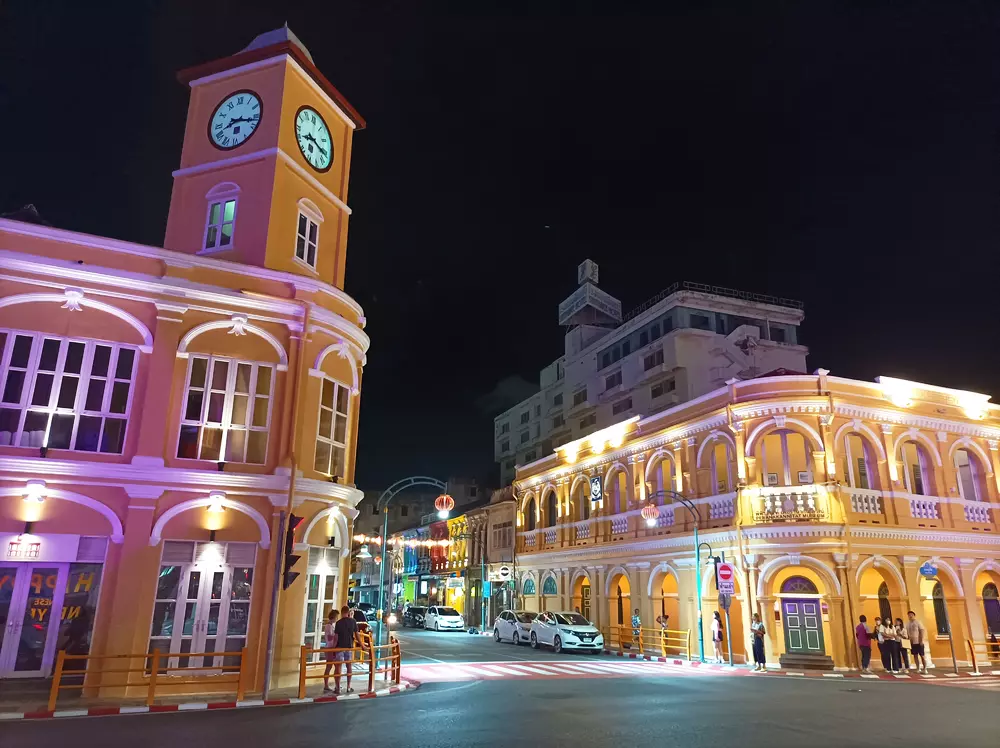Phuket Old Town stands as a vibrant mosaic of history and culture, inviting travelers to delve into its rich past. Once the heart of a flourishing tin mining industry in the 19th century, this part of Phuket has evolved into a testament to diverse influences—from Chinese settlers to Portuguese traders.
Today, it boasts an eclectic blend of architecture and culture that captivates visitors at every turn. “Phuket Old Town is not just a destination; it’s a living storybook,” noted local historian Dr. Chavalit Srisuk, emphasizing the unique charm that lingers in its streets.
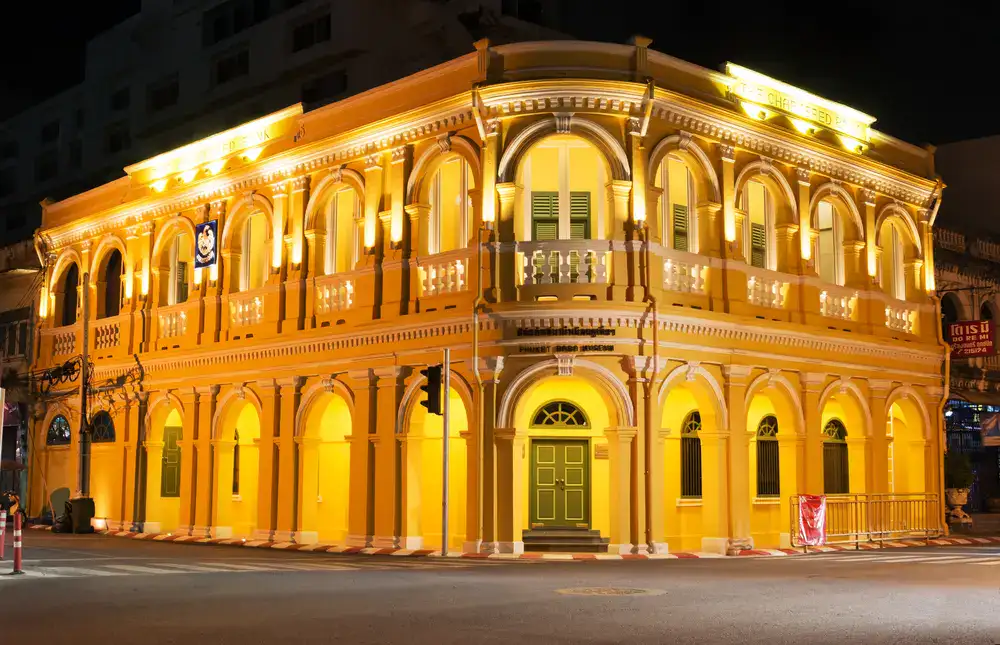
Exploring Phuket Old Town offers more than just picturesque sights; it provides an immersive experience of the region’s cultural heritage. The striking Sino-Portuguese buildings, adorned with intricate designs and vibrant colors, narrate tales of bygone eras while contemporary street art reflects the community’s evolving identity.
Whether strolling through weekend markets or admiring captivating murals, tourists can witness how artistry intertwines with history here. This article aims to guide explorers through Phuket’s hidden gems, from historical landmarks to culinary delights—all while celebrating the extraordinary narrative woven into Thailand’s beloved island sanctuary.
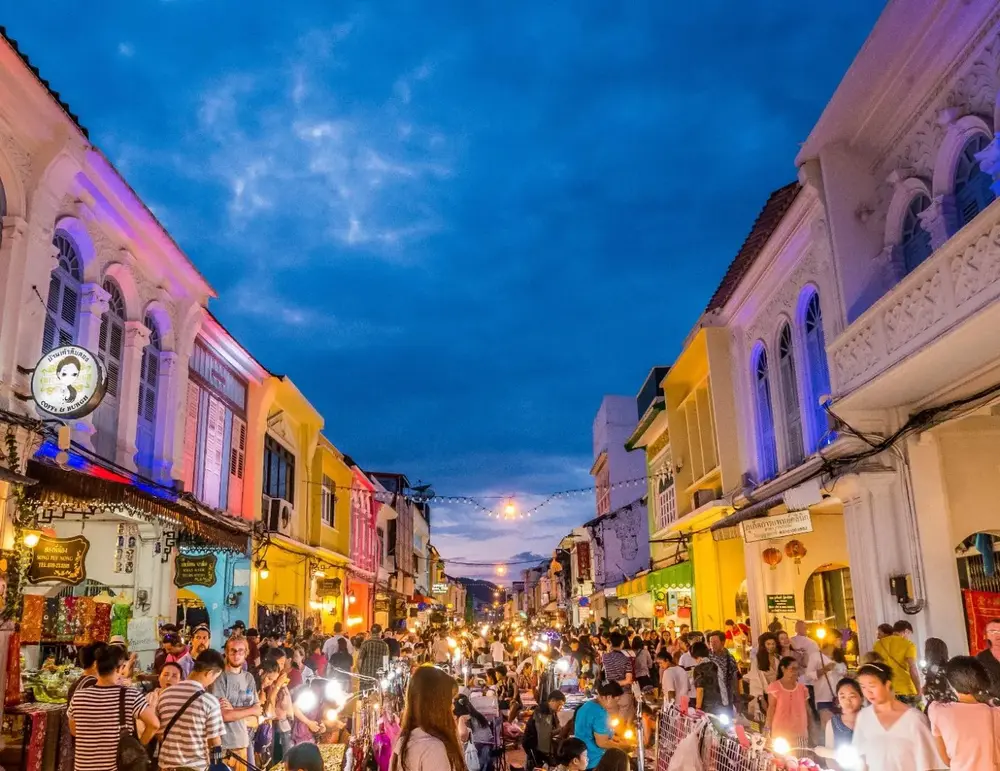
A Brief History of Phuket Old Town
Phuket Old Town traces its origins back to the late 19th century, when a tin mining boom transformed the island into an economic hub. The discovery of tin spurred an influx of Chinese immigrants, who played a crucial role in establishing the area’s commercial landscape.
These pioneers sought not only fortunes but also community, crafting a cultural mosaic that integrates Malay, Chinese, Indian, and European influences. Evidence of this eclectic heritage is visible in the region’s architecture and local customs, making Phuket Old Town a living testament to its vibrant history.
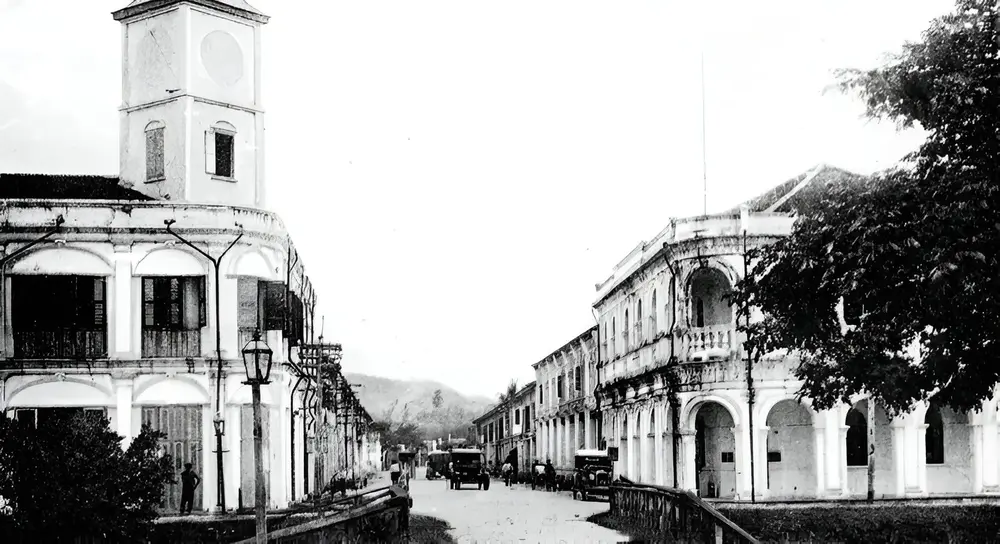
The development of Phuket Town was propelled by significant milestones in its economic journey. In 1896, the establishment of political autonomy distinguished Phuket from surrounding islands and allowed it to flourish independently.
This era saw a surge in commerce and infrastructure as merchants built shophouses adorned with ornate facades—often called Sino-Portuguese architecture—that still line the streets today. Iconic examples can be seen along Thalang Road and Krabi Road, showcasing intricate tile work and bold colors that epitomize the period’s affluence.
Throughout its evolution, Phuket Old Town has served as a melting pot for various cultures. The interplay between local traditions and foreign influences brought rich diversity to culinary practices and festivals celebrated within the town’s confines.
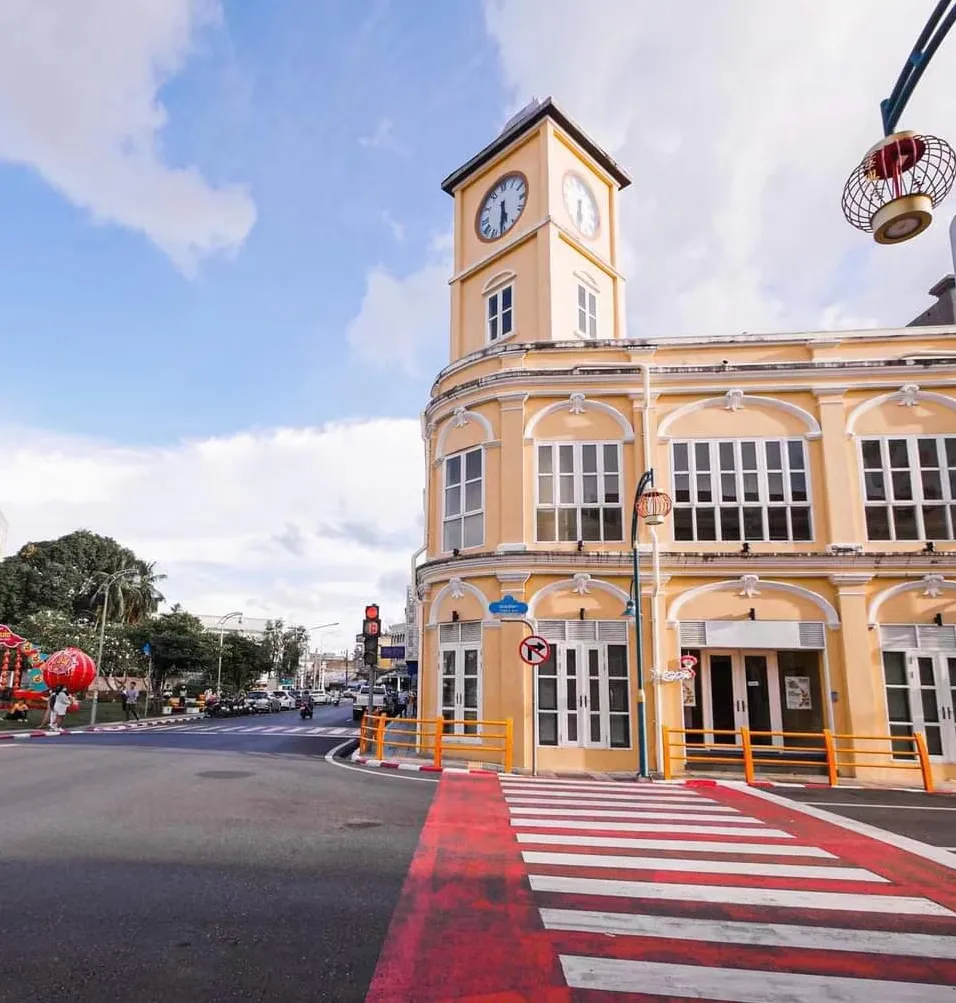
Today, remnants of this history can still be felt during annual events like the Vegetarian Festival or Loy Krathong, where communities gather to uphold cherished rituals that date back generations. Each historical milestone contributes to Phuket Town’s unique identity while inviting visitors to delve deeper into its past.
For those exploring Phuket Old Town today—whether staying at boutique hotels nestled within historic buildings or wandering through lively markets—the echoes of history are felt at every corner. The blending of cultures that once shaped this quaint town continues to enrich its narrative as both locals and tourists come together in celebration of their shared heritage.
Vibrant Street Art Scene
Phuket Old Town is not just a repository of historical architecture; it is also a canvas for contemporary expressions through street art. This dynamic art form plays a crucial role in showcasing the local culture, with vibrant murals and installations reflecting the stories, struggles, and dreams of the community. As visitors wander through its charming streets, they will find artworks that celebrate Thai heritage as well as global influences, illustrating how history can merge with modern creativity.
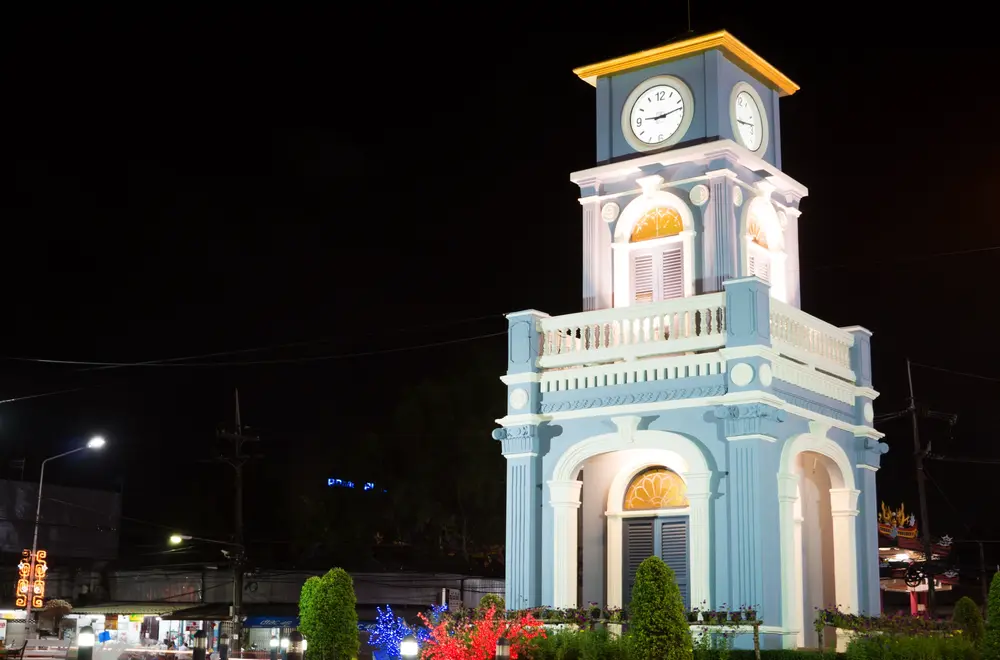
Another notable installation—found along Yaowarat Road—is a mesmerizing piece displaying traditional Thai motifs blended with modern design elements, inviting travelers to reflect on the fusion of old and new. Visitors should also seek out the hidden alleys where smaller but iconic pieces emerge, often offering thought-provoking commentary about social issues and human experiences unique to Phuket’s identity.
Street art in this area acts as both decoration and dialogue. It reflects community values while transforming public spaces into interactive galleries. The artists often draw from personal narratives or collaborate with locals to ensure authenticity in their work. Walking through these adorned streets provides a glimpse into everyday life in Phuket Old Town while inviting conversations among residents and visitors alike.
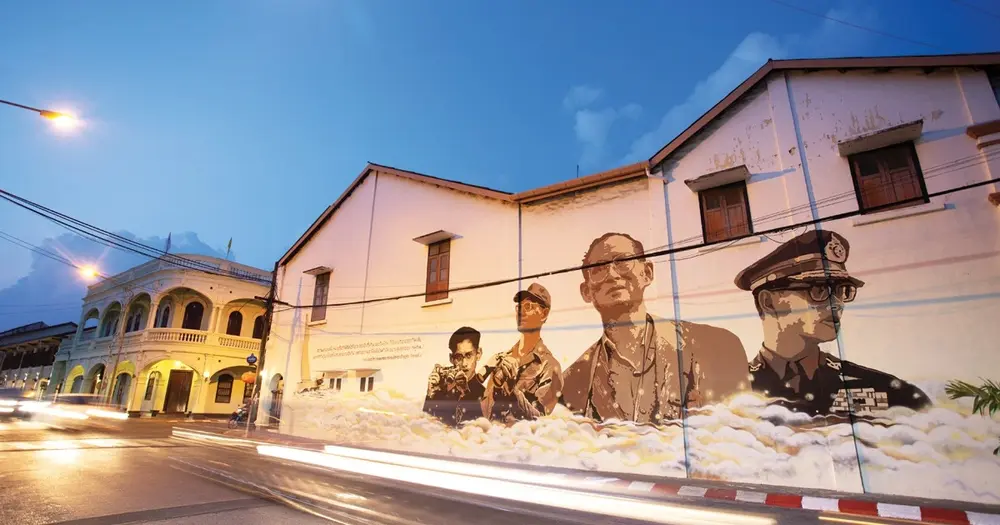
To fully appreciate this vibrant scene, art lovers are encouraged to explore areas like Rang Hill, where stunning views complement bright displays of creativity. Local guided tours also highlight key locations and give insight into the meaning behind various pieces—a perfect way to deepen one’s connection to both street art and Phuket’s rich cultural tapestry.
Must-Visit Historical Sites
Phuket Old Town is rich in historical landmarks that offer a glimpse into the island’s cultural heritage. One of the most prominent sites is Thalang Road, known for its captivating colonial architecture and vibrant atmosphere.
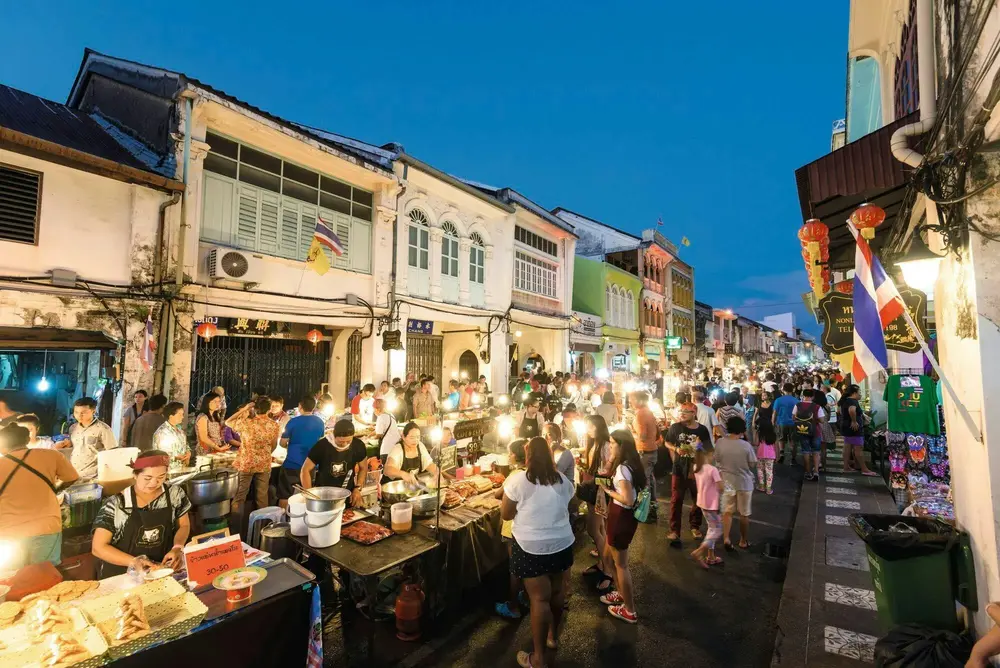
This road serves as the heart of Phuket Old Town, lined with shops and cafés housed within historic buildings. It was formerly the main thoroughfare during the tin mining boom of the late 19th century, giving visitors an authentic feel for the area’s bustling past. Exploring Thalang Road provides ample opportunities to sample local treats or purchase unique handicrafts while soaking in the town’s lively ambiance.
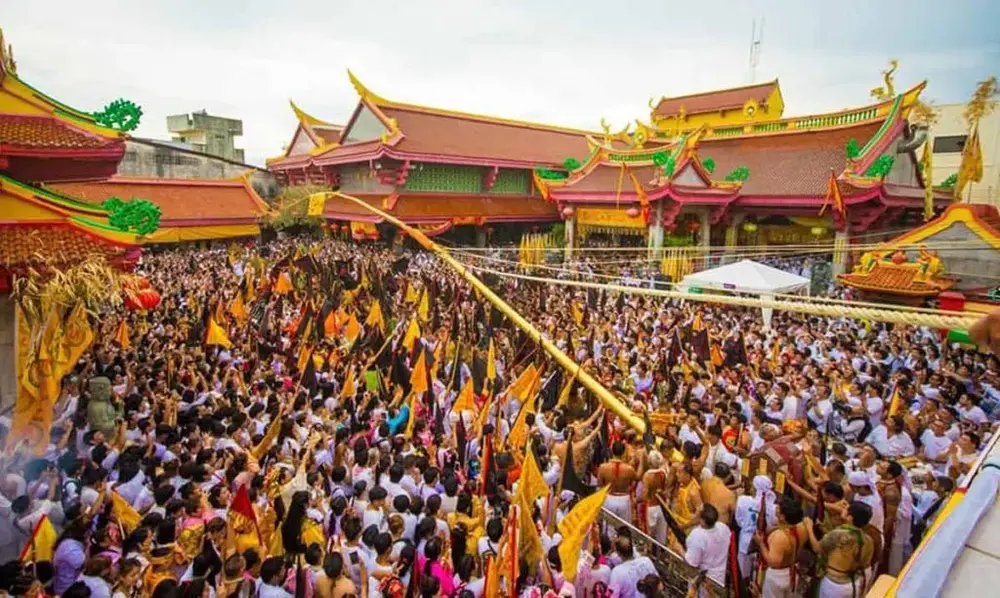
Another highlight is Jui Tui Shrine, a significant spiritual landmark deeply rooted in Chinese tradition. Established by Hokkien immigrants in the mid-1800s, this shrine celebrates deities associated with prosperity and protection.
Visitors will find ornate altars adorned with colorful offerings and elaborate sculptures, which reflect a blend of local faiths and traditions. The annual Vegetarian Festival transforms this site into a vibrant hub where devotees partake in rituals to cleanse themselves spiritually—a sight that captures both tradition and community spirit.
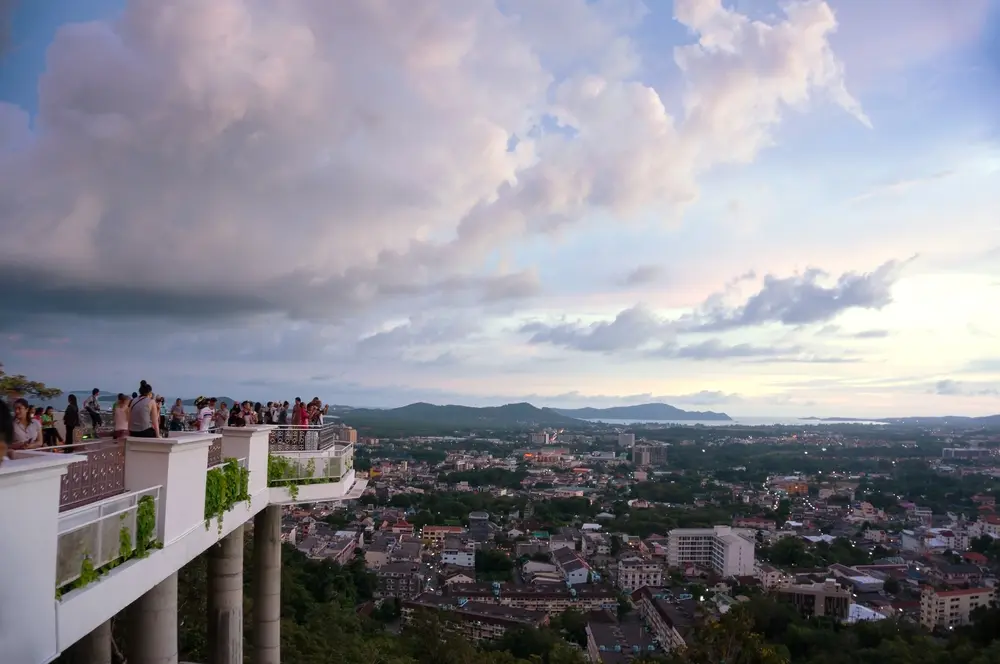
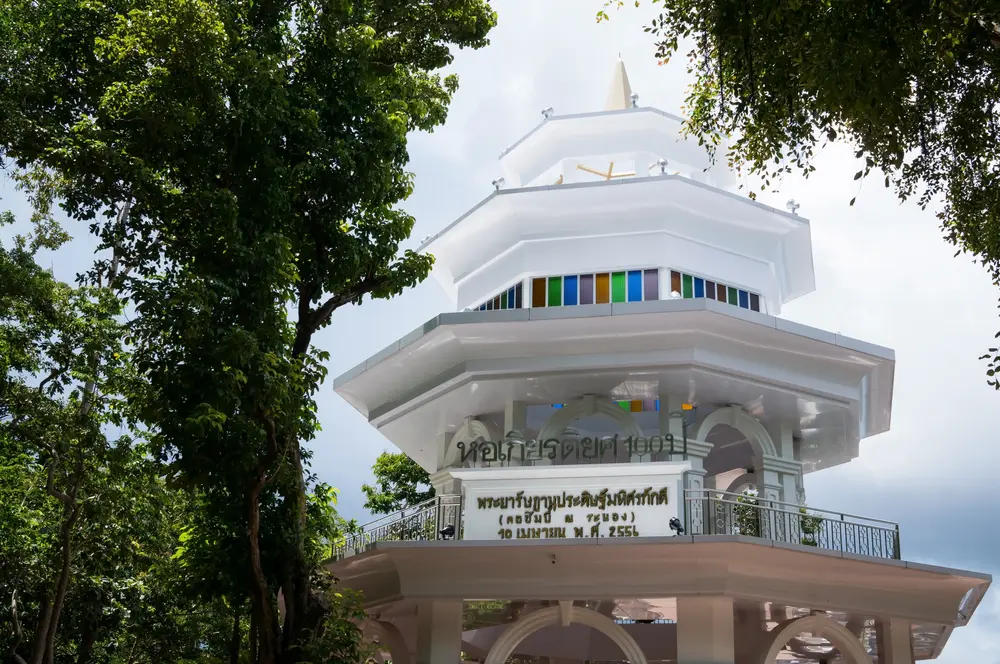
Rang Hill offers a different perspective on Phuket Old Town’s history and geography. Perched above the city, it provides stunning panoramic views of both Old Town and Patong Beach. A visit to Rang Hill usually includes exploring its charming lookout tower decorated with vivid mosaics depicting Thai culture.
History lovers can appreciate not only its vista but also its significance as a communication point during World War II when it was used for observing movements along the coast.
To make the most out of these visits, tourists should consider various transportation options available throughout Phuket Old Town, including walking tours that make it easy to connect different landmarks.
Taking time while traversing these storied sites ensures visitors absorb their rich histories fully—whether it’s pausing at Thalang Road to enjoy street food or climbing Rang Hill at sunset for breathtaking views, each experience contributes to understanding Phuket’s layered narrative.
Local Museums: A Window into the Past
Phuket Old Town is home to several local museums that serve as invaluable repositories of the island’s rich history and cultural heritage. Among them, the Thai Hua Museum stands out for its engaging exhibits that highlight Phuket’s evolution from a tin mining hub in the 19th century to its current status as a vibrant tourist destination.
Housed within one of the town’s beautiful Sino-Portuguese buildings, the museum features interactive displays showcasing traditional crafts, photographs, and artifacts that capture significant moments in Phuket’s past. Visitors can learn about the diverse influences—Chinese, Malay, and European—that have shaped the region over the years.
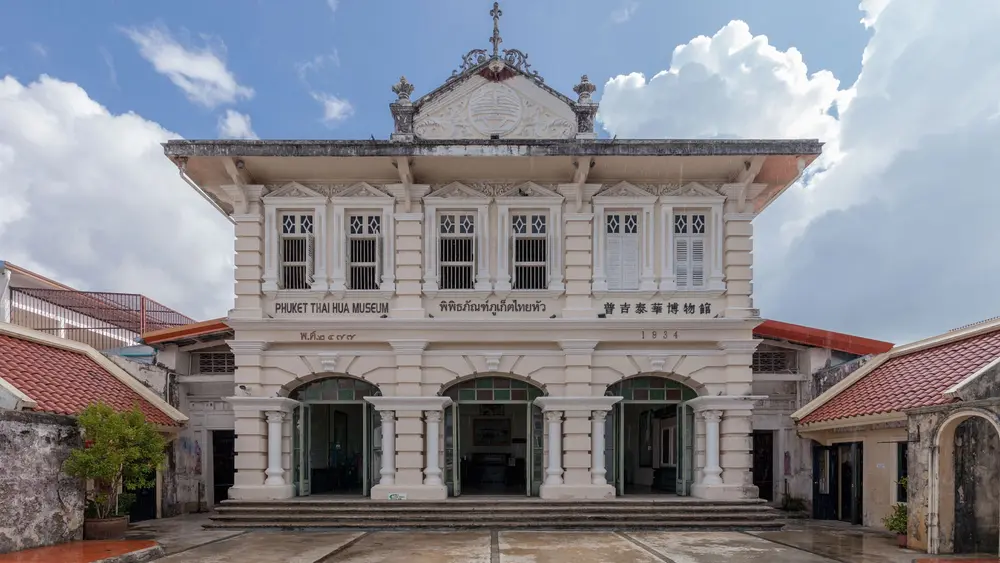
Another notable institution is the Phuket Mining Museum, which offers a deep dive into the industry that once fueled much of Phuket’s growth. The museum presents an extensive collection of mining tools and equipment alongside informative panels detailing tin mining’s relevance to Thailand’s economy.
Interactive demonstrations provide insight into traditional mining methods used by early pioneers. This wealth of content makes it an essential stop for those wanting to understand not just Phuket but also broader historical trends in Southeast Asia.
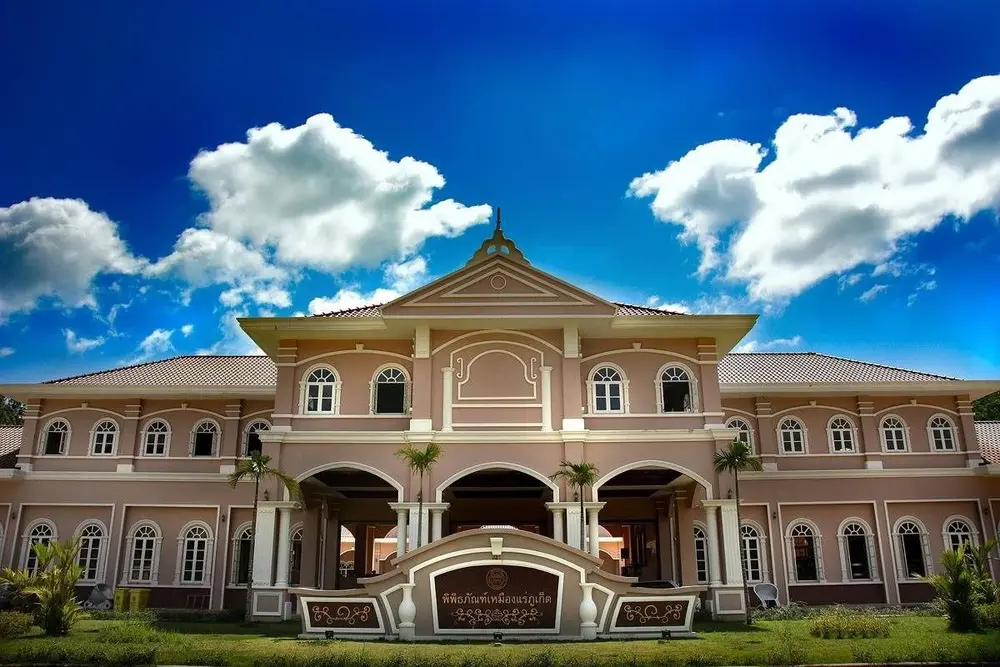
To make the most out of your visit to these museums, planning ahead can significantly enhance your experience. Consider visiting during weekdays for fewer crowds; this allows more time for reflection and exploration without feeling rushed through exquisite exhibitions.
Additionally, both museums often offer guided tours led by knowledgeable staff who illuminate further details about various displays. Taking part in these tours provides visitors with stories and insights that bring artifacts to life.
In summary, local museums in Phuket Old Town offer enlightening perspectives on its multicultural heritage and economic evolution. The combination of fascinating exhibits housed in stunning Sino-Portuguese buildings creates a meaningful experience for travelers eager to delve deeper into this unique locale’s past.
Ultimately, these destinations are not only educational but also serve as gateways to understanding how tradition still resonates within modern-day Phuket.
Weekend Night Market
The vibrant nightlife in Phuket Old Town comes alive with its renowned weekend night markets, where locals and tourists gather to savor the unique flavors and crafts of the region. One of the most popular destinations is Thalang Road Walking Street or Phuket Old Town Market, which transforms into a bustling hub every Sunday evening.
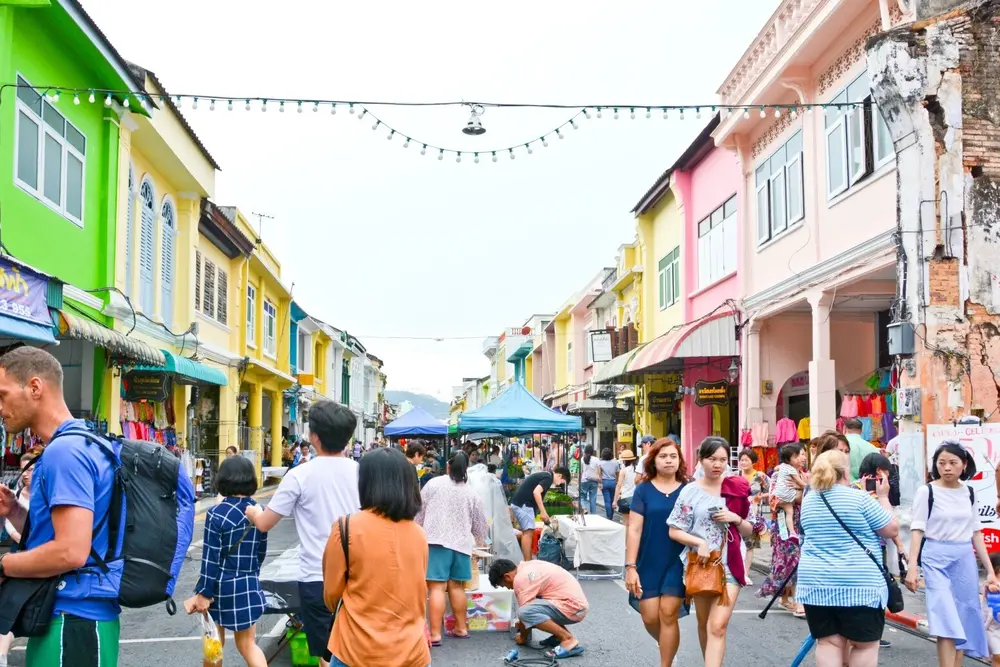
The street becomes an open-air bazaar adorned with stalls featuring local handicrafts, artisanal goods, and an array of enticing foods. As visitors stroll through, they can enjoy performances from street musicians and indulge in refreshments ranging from fresh fruit juices to Thai desserts like mango sticky rice.
In addition to Thalang Road’s charm, The Chartered Walking Street has recently emerged as a new hotspot for market lovers. This area features a modern twist on traditional market experiences, combining contemporary design with cultural elements.
It stands out not only for its eclectic selection of food offerings—ranging from classic Thai dishes to innovative fusion cuisine—but also for its unique atmosphere. Visitors often find themselves browsing handmade crafts or participating in workshops that highlight local artisanship while mingling with fellow explorers amidst lively entertainment.
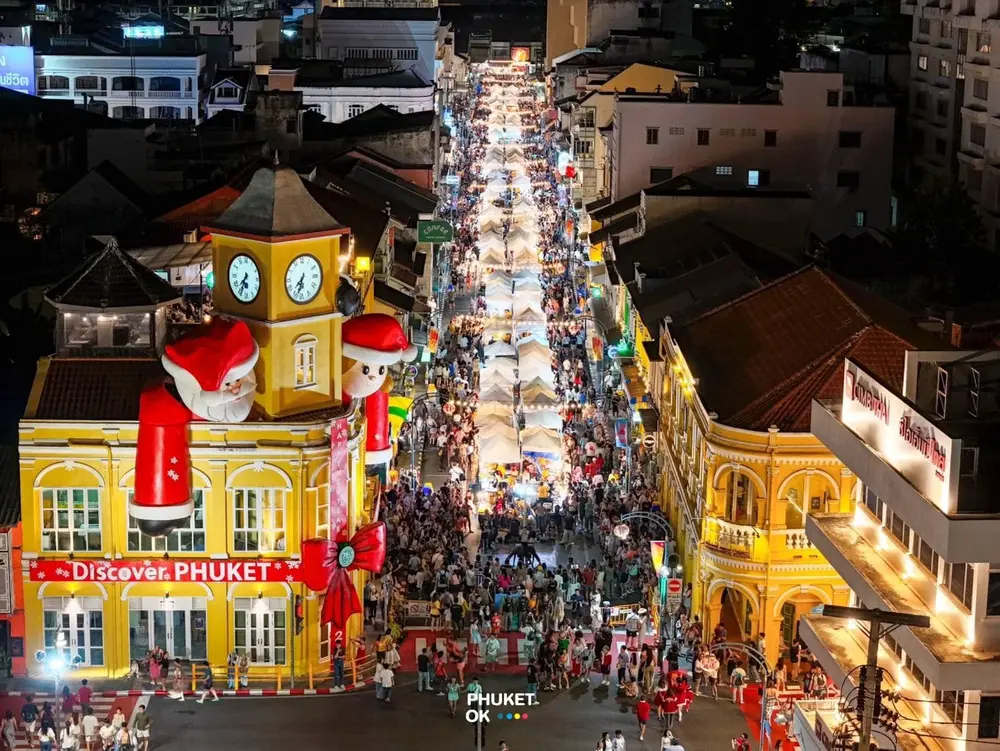
Both markets provide ample opportunities to experience Thailand’s rich culinary heritage. Locals recommend trying dishes such as Pad Thai and Roti Sai Mai—a sweet cotton candy-style delicacy specific to this region. Additionally, patrons are encouraged to explore various snack options like grilled seafood skewers or fried spring rolls directly from enthusiastic vendors eager to share their recipes passed down for generations.
A visit during the night markets encapsulates a festive spirit reflective of Phuket Old Town’s culture and communal ties. While shopping or sampling the street fare, travelers can soak in the artistic atmosphere characterized by colorful lighting and friendly banter between sellers and buyers alike.
Engaging all senses in this vibrant environment makes it an unforgettable way to delve deeper into both the historical and contemporary life of Phuket Old Town.
Culinary Delights: Taste of Tradition
Phuket Old Town’s culinary landscape serves as a vibrant tapestry woven from the region’s rich cultural heritage. Influenced by Chinese, Malay, Indian, and Portuguese traditions, each dish tells a story about the diverse communities that have shaped this historic town.
Food is more than sustenance here; it is a reflection of history and identity. Travelers navigating the charming streets are sure to encounter a symphony of flavors that invite exploration and appreciation.
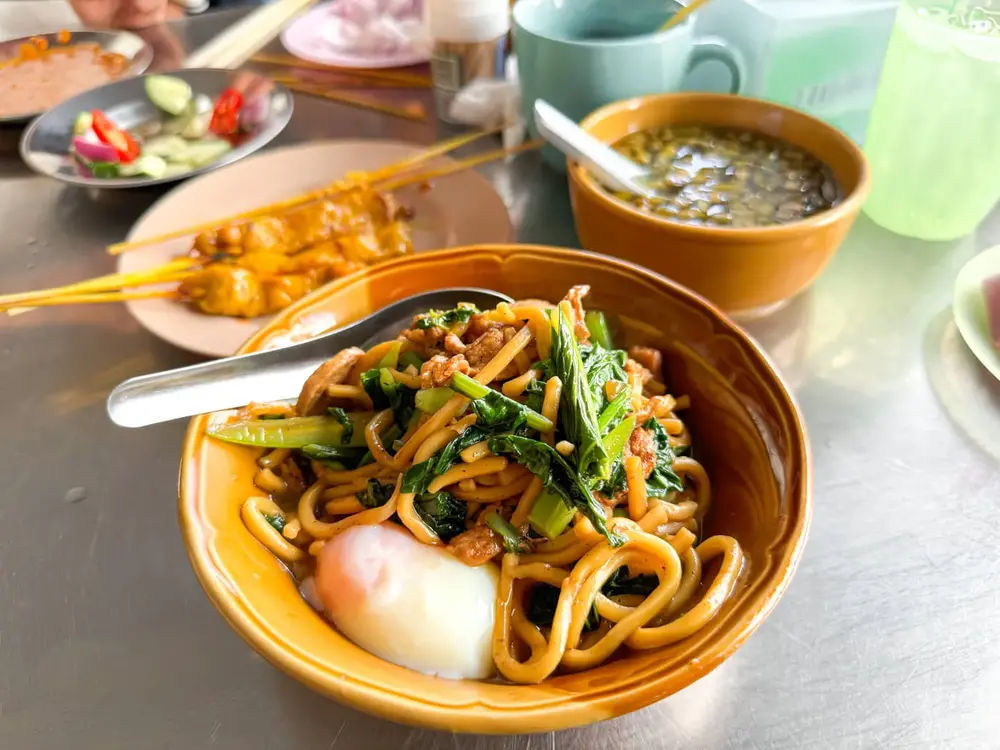
Among the must-try dishes in Phuket Old Town is ‘Mee Hokkien Noodle,’ a stir-fried noodle delicacy infused with seafood and served with a savory dipping sauce. Another local favorite is ‘Khanom Jeen,’ rice noodles topped with spicy curries, often enjoyed for breakfast or lunch.
For those seeking something sweet, ‘Baba Dainty’ pastries showcase a delightful mix of coconut and pandan flavors that evoke memories of the owner’s grandmother’s kitchen. These dishes represent just a fraction of Phuket’s eclectic gastronomy, enticing both locals and visitors alike to delve deeper into its offerings.
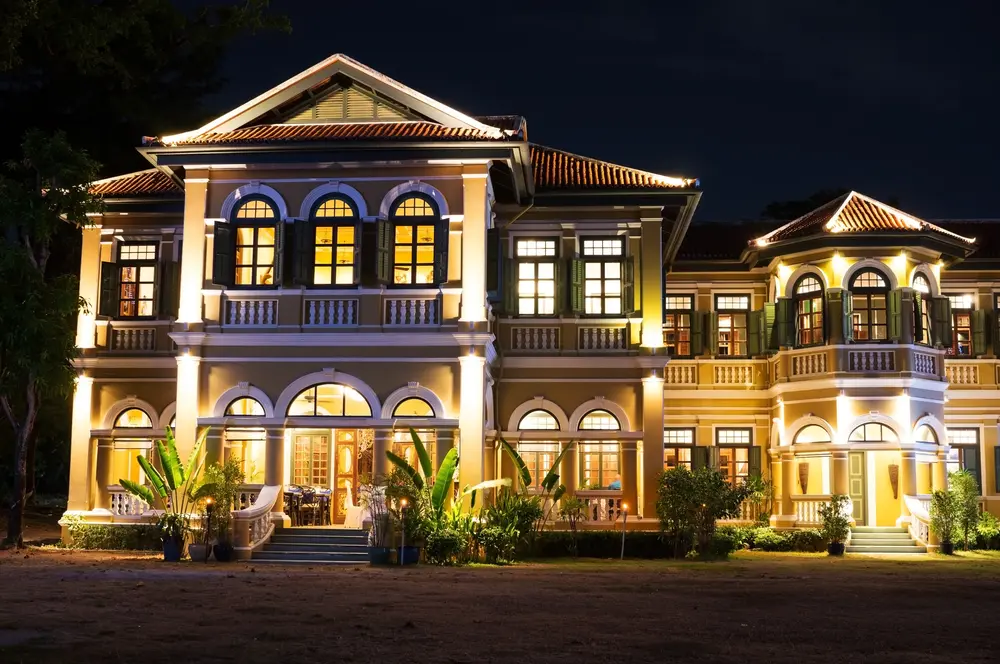
To experience authentic flavors authentically, food enthusiasts should seek out popular restaurants such as ‘Blue Elephant,’ which offers high-end Thai cuisine in an old colonial mansion setting.
Conversely, casual strolls through local night markets reveal hidden gems like street vendors serving up ‘Roti’—a crispy pancake filled with banana and drizzled with sweet condensed milk—that perfectly encapsulates the essence of street food culture in Phuket Old Town.
Whether dining at upscale eateries or savoring tasty bites from bustling stalls, visitors will find that every meal provides insight into both history and tradition.
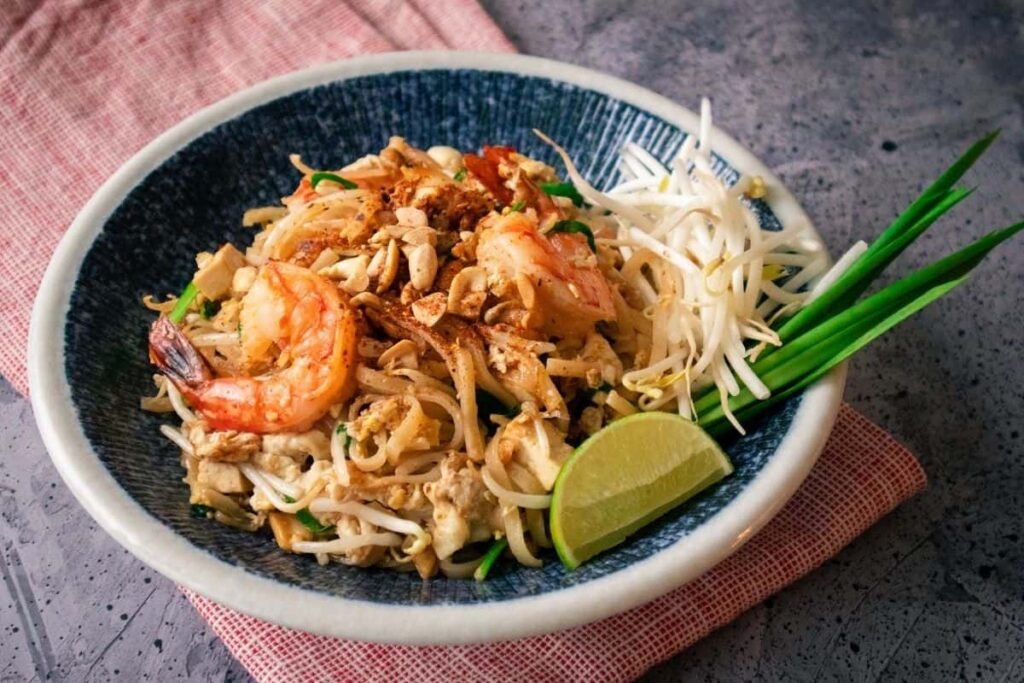
For those eager to explore Phuket Old Town’s culinary scene further, guided food tours can offer an insider perspective on various dishes along with their histories.
This approach enables travelers not only to indulge in exquisite food but also to appreciate how these traditional recipes have been passed down through generations.
Ultimately, discovering the region’s varied flavors promises an enriching experience that enhances any journey through this culturally significant destination.
Practical Tips for Your Visit
Exploring Phuket Old Town is a rewarding experience, but navigating its vibrant streets requires some planning. Walking is the best way to take in the unique architecture and local charm. The town’s compact layout makes it easy for visitors to stroll from one landmark to another. Motorbikes are also available for rent at various shops, offering an alternative way to cover more ground without missing the sights. For those who prefer motorized transport, tuk-tuks serve as colorful and convenient rides around town.

Timing your visit can enhance the experience significantly. Early mornings or late afternoons typically see fewer tourists, allowing visitors to immerse themselves in the cultural atmosphere without feeling rushed.
Additionally, visiting during weekdays might help avoid larger crowds often seen on weekends when many travelers flock to popular spots like Thalang Road. During these quieter times, photographers can capture the stunning architecture and vibrant street art in soft light, making for memorable keepsakes.
Packing wisely ensures a comfortable adventure through Phuket Old Town. Essential items include lightweight clothing suitable for warm weather and a sturdy pair of walking shoes to tackle uneven pavements.
A reusable water bottle will keep you hydrated as you explore under the sun. Don’t forget sunscreen and hats; they can protect against tropical heat while enjoying outdoor sights like Rang Hill or Jui Tui Shrine. A portable charger helps ensure devices stay powered for capturing photos or accessing maps on the go.
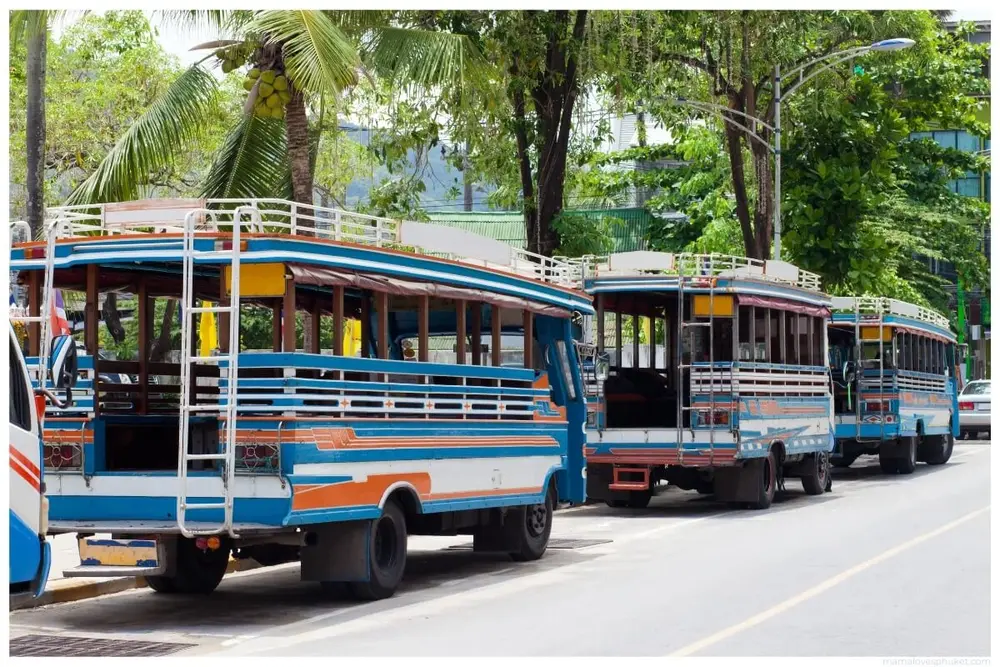
Overall, thoughtful preparation transforms a visit into an enriching journey through history and culture in Phuket Old Town. By planning transportation, timing visits strategically, and packing essentials neatly, travelers can fully appreciate the treasures this historic area has to offer while creating lifelong memories of their adventure.
Embrace the Journey Through Time
Phuket Old Town stands as a compelling testament to Thailand’s rich cultural heritage and historical evolution. Visitors are encouraged to explore its unique architecture, vibrant street art, and local culinary delights.
Each corner of this town tells a story, from the Sino-Portuguese buildings lining Thalang Road to the lively atmosphere of weekend night markets. As travelers delve into Phuket Old Town’s history, they not only witness but also experience the convergence of diverse influences that have shaped this charming destination.
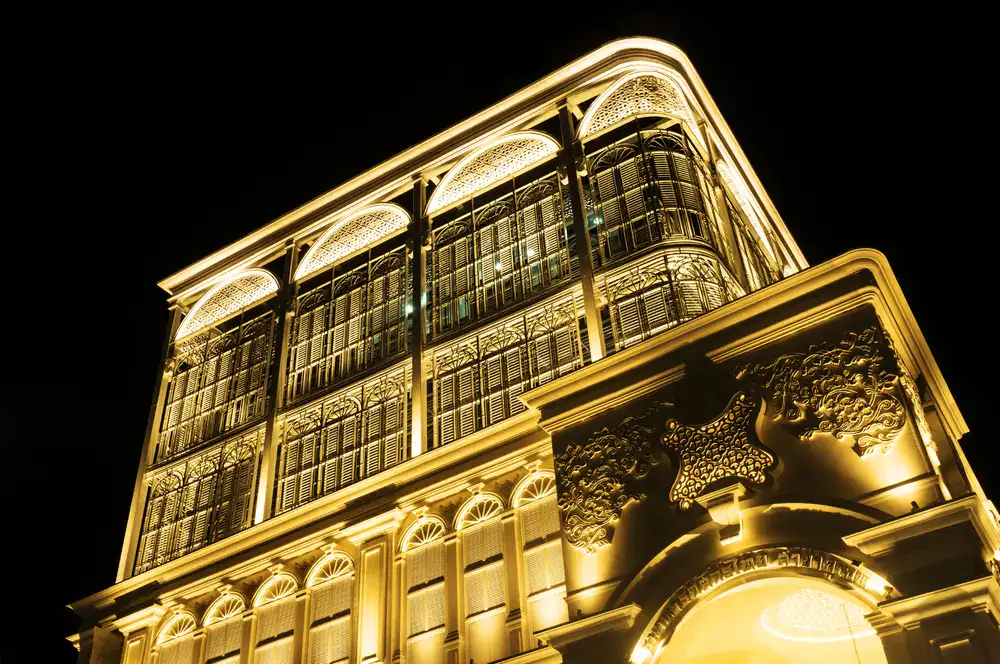
Immersing oneself in the local culture enhances every visit to Phuket Old Town. Festivals and events offer glimpses into traditional practices, while museums provide deeper insights into its past. By actively engaging with its history and community, tourists can create unforgettable memories that resonate long after their journey concludes.
Exploring Phuket Old Town is not merely a sightseeing venture; it’s an invitation to connect with a rich tapestry of stories waiting to be uncovered.


